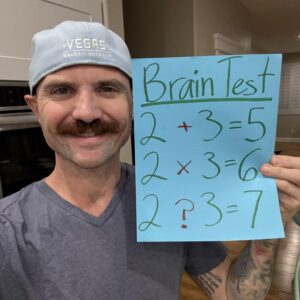The Weight of Silence
My name is Thomas Reid, and I need to tell you about the day I discovered that grief can be a living thing—something that breathes and grows and takes up residence in the spaces where love used to live.
It was a Tuesday in March when everything changed, though I wouldn’t understand the full scope of that change for weeks. The morning had started like any other in our small apartment above the bookshop I managed in downtown Portland. Coffee brewing, NPR murmuring from the kitchen radio, and the familiar sounds of my wife Anna getting ready for her job at the medical facility where she coordinated patient care programs.
Anna worked as a liaison between families and healthcare providers, helping navigate the complex world of treatment options and insurance requirements. Her days were filled with difficult conversations, medical terminology, and the kind of emotional labor that most people never see but that keeps the healthcare system functioning for vulnerable patients. She loved the work despite its challenges, finding meaning in helping families understand their options during medical crises.
That Tuesday morning, Anna was particularly excited about a new program she was launching to support families dealing with pediatric cancer diagnoses. She’d been working with several pharmaceutical companies to develop resources that would help parents understand treatment protocols and connect with support groups.
“I think this could really make a difference,” she told me over breakfast, her eyes bright with the enthusiasm that had first attracted me to her eight years earlier. “So many families feel lost when they’re dealing with a child’s cancer diagnosis. Having someone to coordinate between the medical team and the family could reduce some of that anxiety.”
I loved listening to Anna talk about her work. She had a way of finding hope in the most difficult circumstances, of seeing possibilities for improvement even when dealing with tragic situations. Her volunteer coordination background had taught her to organize complex programs efficiently, while her natural empathy made her effective at supporting families during crises.
“Dr. Martinez thinks we could expand the program to other medical facilities if the pilot goes well,” Anna continued, gathering her papers and preparing to leave. “The pharmaceutical funding could support coordinators at five different hospitals within two years.”
I kissed her goodbye at the door, watching as she walked down the street toward the bus stop with her characteristic quick pace. Anna was always moving with purpose, always focused on the next task or conversation or problem that needed solving. Her energy was infectious, making everyone around her feel more capable and optimistic.
That was the last normal conversation we ever had.
The Call
The bookshop where I worked specialized in medical texts, academic publications, and professional resources for healthcare workers. Our customers were mostly doctors, nurses, researchers, and students who needed specialized materials for their studies or practice. The work was quiet and methodical, involving a lot of inventory management and special orders for hard-to-find publications.
Around 2:30 that afternoon, while I was unpacking a shipment of nursing textbooks, my phone rang with a number I didn’t recognize. When I answered, the voice on the other end belonged to Dr. Jennifer Walsh, the administrator at Anna’s medical facility.
“Thomas, I’m calling about Anna,” she said, her professional tone unable to disguise an underlying tension. “She hasn’t returned from her lunch break, and she had important meetings scheduled this afternoon. Her supervisor is concerned because Anna never misses appointments without calling.”
My first reaction was mild irritation rather than worry. Anna was responsible to a fault, but she was also passionate about her work and sometimes lost track of time when she was researching new programs or following up with families who needed additional support.
“She probably got caught up helping someone,” I told Dr. Walsh. “You know how she is about making sure families have everything they need.”
“That’s what we thought initially,” Dr. Walsh replied. “But we’ve checked with all the departments she was supposed to visit today, and no one has seen her since she left for lunch at noon.”
The bookshop suddenly felt very quiet around me. I could hear the afternoon traffic outside, the distant hum of the espresso machine from the coffee shop next door, and my own heartbeat beginning to accelerate.
“Have you tried calling her cell phone?”
“It goes straight to voicemail. Thomas, I think we need to contact the police.”
The Search
What followed were the longest four hours of my life. The Portland Police took a missing person report, though they emphasized that adults had the right to disappear and that most missing person cases involving adults resolved within 24 hours.
“She’s probably fine,” Officer Martinez assured me as we sat in the medical facility’s conference room, going through Anna’s schedule and recent activities. “People get overwhelmed, need space, sometimes just take off for a few hours to clear their heads.”
But Anna wasn’t the type to disappear without explanation. She was the most responsible person I knew, the one who called if she was going to be even fifteen minutes late, who kept detailed calendars and always followed through on commitments.
Dr. Walsh provided the police with Anna’s recent schedule, her case files, and contact information for the families she’d been working with. The pediatric cancer program Anna was developing involved several families currently dealing with treatment decisions, and the stress of those situations could be overwhelming even for experienced coordinators.
“Sometimes people in caregiving roles experience what we call compassion fatigue,” explained Dr. Rodriguez, the facility’s staff psychologist. “The emotional weight of constantly supporting families through medical crises can become overwhelming, even for someone as capable as Anna.”
By 6 PM, police had contacted several restaurants and coffee shops near the medical facility where Anna might have gone for lunch. None of the staff remembered seeing her, though the lunch rush was busy and a single customer might easily go unnoticed.
I drove around the neighborhood myself, checking places Anna might have gone—the bookstore where she bought novels, the park where she sometimes walked during breaks, the grocery store we both frequented. Nothing. No one had seen her.
As darkness fell over Portland, the search took on a more urgent tone. Police began checking hospitals, morgues, and accident reports. The possibility that Anna had been injured or become ill while out for lunch seemed increasingly likely as other explanations were ruled out.
The Discovery
The call came at 11:47 PM while I was sitting in our apartment, staring at Anna’s coffee cup from that morning, still sitting in the sink where she’d left it.
“Mr. Reid, this is Detective Sarah Chen with Portland Police. I need you to come down to the station.”
Something in her voice made my blood freeze. “Did you find Anna?”
“Sir, I’d prefer to speak with you in person.”
The drive to the police station passed in a blur of streetlights and anxiety. I kept telling myself that Anna was fine, that this was all a misunderstanding, that she would be there waiting for me with some perfectly reasonable explanation for why she’d been unreachable all day.
Detective Chen met me in the lobby, a woman in her forties with kind eyes and the bearing of someone who delivered difficult news regularly. She led me to a small conference room that smelled like burnt coffee and industrial disinfectant.
“Mr. Reid, I’m sorry to tell you that Anna was found deceased this afternoon.”
The words hit me like a physical blow. “That’s not possible. There’s been a mistake.”
“A jogger found her body in Forest Park around 4 PM. It appears she took her own life.”
The room tilted around me. “No. No, that’s impossible. Anna wouldn’t… she was fine this morning. She was excited about work. She had plans.”
Detective Chen’s expression was patient but firm. “I understand this is shocking news. Suicide often comes without warning signs that are obvious to family members.”
“You don’t understand. Anna loved her job. She was launching a new program to help families with pediatric cancer. She was talking about expanding it to other hospitals. People don’t kill themselves when they’re excited about the future.”
But even as I said the words, doubt was creeping in. Had Anna seemed excited that morning, or had I just assumed she was? Looking back, had there been signs of distress that I’d missed?
“Mr. Reid, grief and shock can make it difficult to process this kind of news. I’m going to arrange for someone to drive you home, and we’ll have more information for you tomorrow.”
The Aftermath
The days following Anna’s death passed in a haze of arrangements, notifications, and the crushing weight of a reality I couldn’t accept. Her family flew in from Seattle for the funeral. Her colleagues from the medical facility attended the service, sharing stories about Anna’s dedication to her patients and her innovative approaches to family support.
Dr. Walsh spoke about Anna’s work with pediatric cancer families, describing her as someone who had made a genuine difference in the lives of children and families facing impossible situations. “Anna understood that healing isn’t just about medical treatment,” she said. “It’s about making sure families feel supported and informed throughout the process.”
But I found myself unable to connect with any of it. The person they were describing—this dedicated healthcare coordinator who had helped so many families—seemed like a stranger. The Anna I knew had been planning new programs, talking about pharmaceutical partnerships, excited about expanding services to other facilities.
How do you reconcile the person you lived with every day with someone who was apparently so overwhelmed by despair that death seemed like the only option?
The Return Home
Coming back to our apartment after the funeral was devastating. Everything was exactly as Anna had left it—her coffee cup still in the sink, her papers spread across the dining table, her bookmark still holding her place in the novel she’d been reading.
I couldn’t bring myself to touch any of it. Instead, I moved around these remnants of her life like they were museum exhibits, precious but untouchable.
The medical facility where Anna had worked sent flowers, along with cards from families she had helped. Reading their messages about how much Anna’s support had meant to them during their children’s treatment only deepened my confusion about her death.
“Anna saved our sanity during Emma’s cancer treatment,” wrote one mother. “She helped us understand the doctors’ recommendations and connected us with other families going through similar experiences. We couldn’t have managed without her.”
“Anna was the only person who seemed to understand how scared we were,” wrote another parent. “She never made us feel stupid for asking questions, and she always had time to explain things we didn’t understand.”
These weren’t messages about someone who was struggling with overwhelming despair. These were testimonials to someone who was making a positive difference in the world.
The First Signs
About a week after the funeral, I began noticing things that didn’t make sense. Small things at first—sounds in the apartment when I was alone, the impression that someone had moved objects while I was at work.
The rational part of my mind understood that grief could cause hallucinations, that trauma could affect perception in ways that seemed real but weren’t. I had read about this phenomenon in some of the psychology texts we stocked at the bookshop.
But the experiences felt completely authentic. I would hear Anna’s key in the door, her footsteps in the hallway, her voice calling my name from the bedroom. Each time, I would rush to find her, only to discover empty rooms and silence.
“It’s normal to experience auditory and visual hallucinations after losing someone suddenly,” Dr. Martinez told me during one of the counseling sessions Anna’s employer had arranged. “Your brain is trying to process a reality it doesn’t want to accept.”
The explanation made sense intellectually, but it didn’t make the experiences less vivid or disturbing. I began to dread coming home from work, knowing that I would hear Anna moving through the apartment, knowing that I would search for her, knowing that I would find nothing.
The Conversations
As weeks passed, the hallucinations became more elaborate. I would hear Anna talking on the phone in the next room, discussing cases with colleagues, coordinating with families about treatment schedules. Her voice was perfectly clear, perfectly familiar, discussing the pediatric cancer program she had been developing.
Sometimes I would answer her, carrying on conversations through the closed door of her office. We would discuss her work, my day at the bookshop, plans for the weekend. These conversations felt completely normal, as natural as any we had shared during our marriage.
It was only later, when I tried to remember details of what we had discussed, that the conversations would dissolve into fragments that didn’t quite make sense.
Dr. Martinez increased the frequency of our sessions and began discussing medication options for what he described as “complicated grief with psychotic features.”
“Thomas, what you’re experiencing is your mind’s way of protecting you from a loss that’s too painful to process,” he explained. “But these conversations with Anna aren’t real, and they’re preventing you from moving through the grief process in a healthy way.”
I understood what he was saying logically, but the conversations felt more real than anything else in my life. Anna’s voice was clear and familiar, her concerns about her patients were consistent with everything I knew about her work, her presence in the apartment was comforting in ways that nothing else could be.
The Routine
As months passed, I developed routines around Anna’s presence. I would set the table for two people, cook meals for both of us, leave space for her on the couch when I watched television. When I went to bed, I would leave her side of the bed unmade, as if she were still working late and would join me later.
These routines felt necessary rather than delusional. Anna had always worked irregular hours, often staying late at the medical facility to coordinate care for families dealing with emergency situations. Coming home to find dinner waiting and her side of the bed prepared was normal, not pathological.
The bookshop became my refuge from well-meaning friends and family members who were concerned about my behavior. At work, surrounded by medical texts and academic journals, I could focus on inventory and customer service without having to explain why I was still setting two places at the dinner table.
Dr. Martinez continued insisting that I was experiencing elaborate grief hallucinations, but his explanations didn’t account for the consistency and detail of my interactions with Anna. She knew things about her cases that I had never known, discussed pharmaceutical industry developments that I hadn’t heard about, mentioned families and medical situations that were completely unfamiliar to me.
How could my mind create such detailed, consistent information about subjects I knew nothing about?
The Investigation
Determined to prove that my experiences were real rather than delusional, I began investigating Anna’s death more thoroughly. The police report was brief, noting that her body had been found in Forest Park with evidence of suicide by overdose. The medical examiner’s report confirmed that Anna had died from consuming a lethal combination of prescription medications.
But there were details that didn’t make sense. Anna had been found wearing clothes she hadn’t worn to work that day. Her purse contained medications that weren’t prescribed to her. Her phone showed text messages to colleagues that had been sent after she was supposedly dead.
When I brought these discrepancies to Detective Chen, she listened patiently but explained that suicide investigations often involved confusing details that were difficult for family members to accept.
“People who are planning to take their own lives sometimes behave in ways that seem inconsistent with their intentions,” she told me. “The medications could have been obtained from various sources. The clothing might have been changed after she left work. The phone messages could have been sent earlier and delivered with a delay.”
Her explanations were reasonable, but they didn’t address the central question that haunted me: How could someone who was actively planning suicide also be developing new programs, coordinating with pharmaceutical companies, and expressing enthusiasm about expanding services to other medical facilities?




